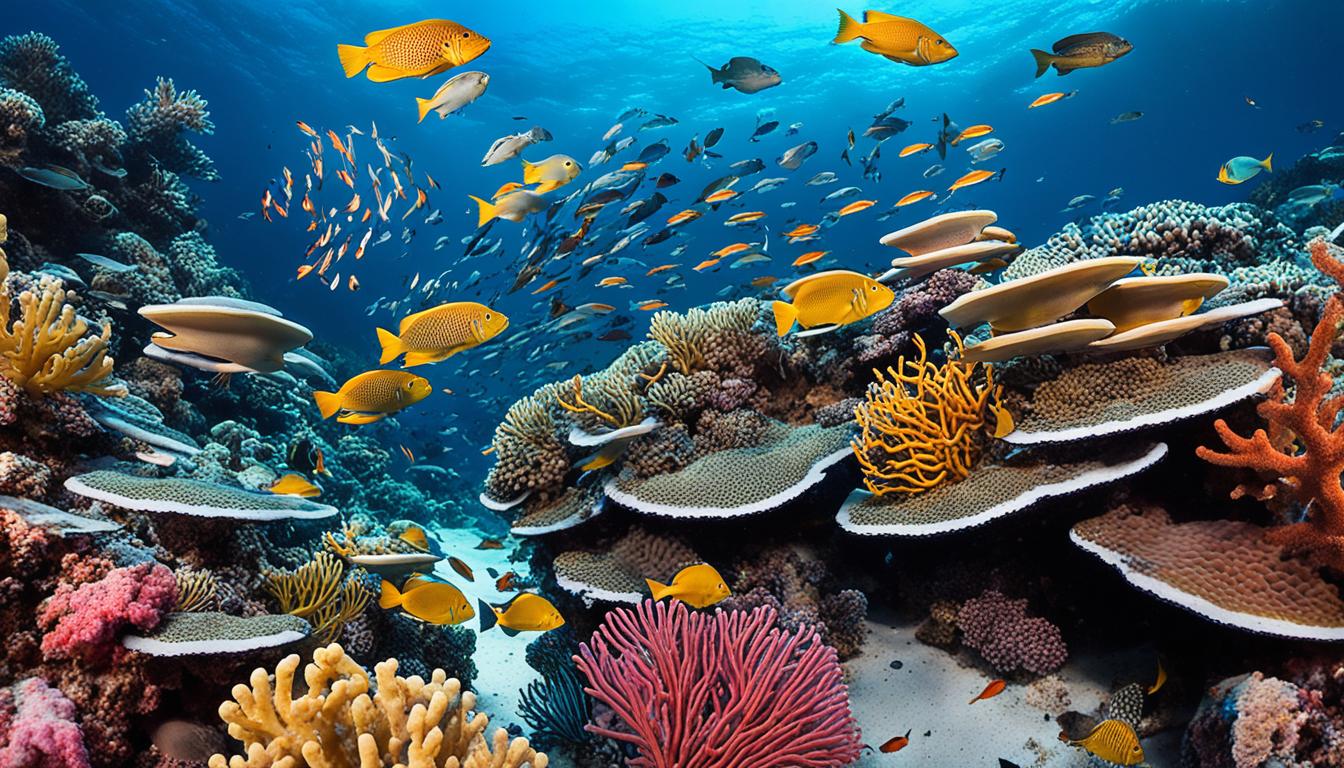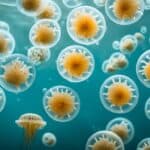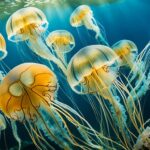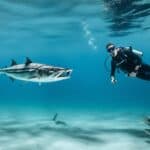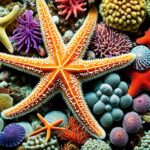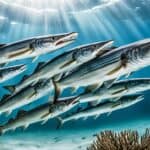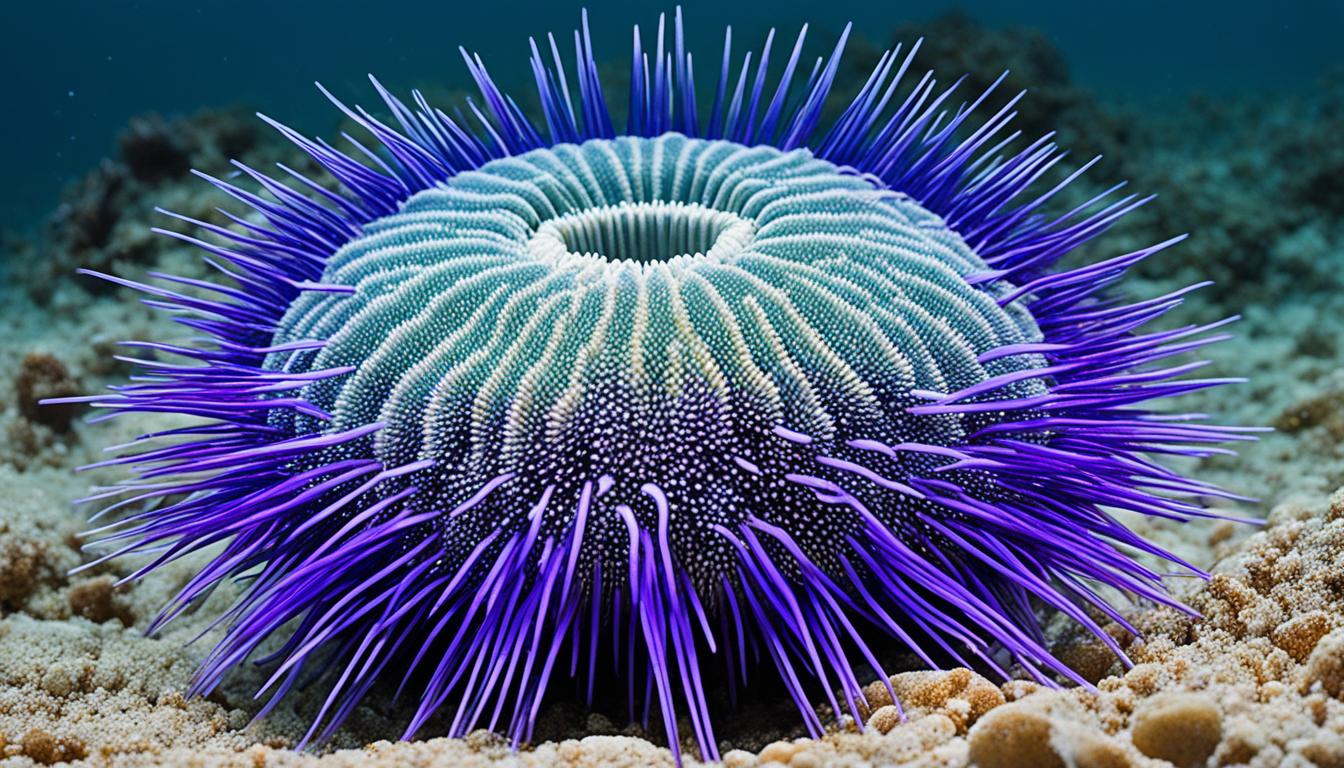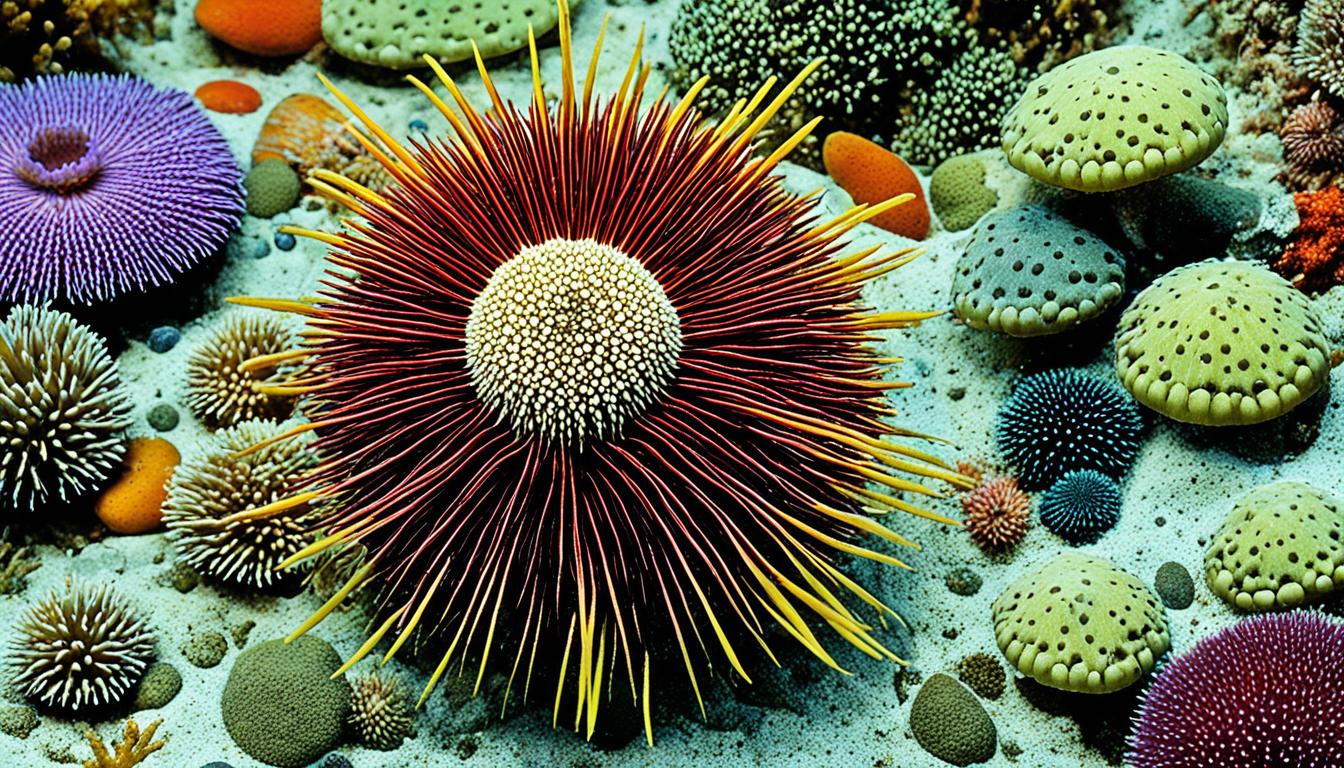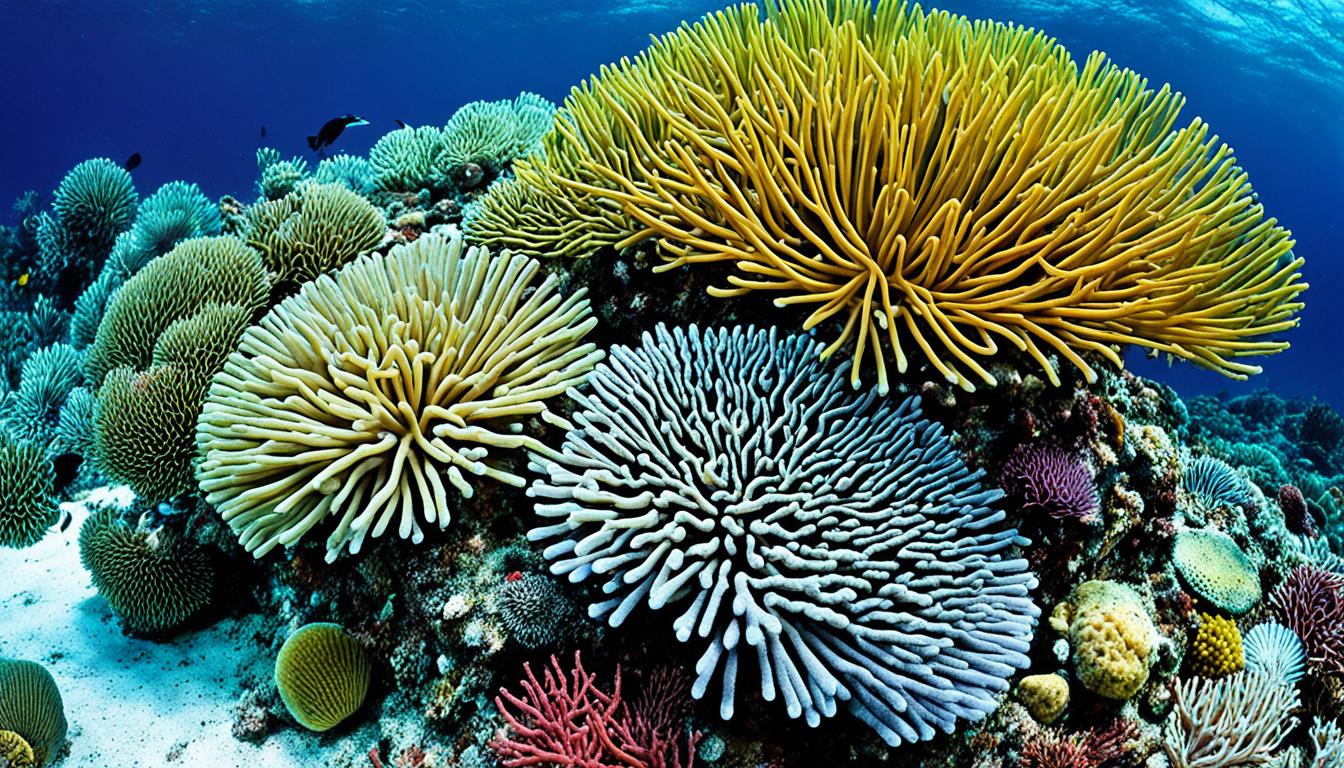Groupers, part of the family Epinephelidae, play a big role in marine ecosystems. You might ask, how do groupers interact with other marine life? These fish live all over the world, mostly in warm and tropical waters. They are top predators, controlling the populations of smaller fish and invertebrates. This helps keep coral reefs healthy.
Groupers have complex social behaviors that affect their interactions in the ocean. Their actions are key to understanding how marine life connects and impacts marine ecosystems.
The Importance of Groupers in Marine Ecosystems
Groupers are often overlooked but play a crucial role in marine ecosystems. They are key predators and species that keep the ocean healthy. Learning about their role helps us understand the ocean’s health.
Role as Top-Level Predators
Groupers control the balance in the ocean by eating many fish species. They keep some fish from eating too much, which helps coral reefs stay healthy. Without them, some fish might eat too much, harming the coral and the whole ocean.
This shows how important groupers are for a healthy ocean. They help keep many different kinds of life in the ocean.
Groupers as Keystone Species
Groupers are also called keystone species because they greatly affect their homes. They dig burrows and make places for other animals to live. This makes the ocean a richer place for many creatures.
If groupers disappear, many other animals might lose their homes and food. This shows why we need to protect these important fish.
How do groupers interact with other marine life?
Groupers often work with many marine species, showing how diverse marine life connects. They have complex behaviors that help them in their ecosystem roles. For example, they hunt with other fish, which makes them better at finding food.
Groupers also talk to other sea creatures in their own way. They use signals to show what they want, like finding a mate or looking for food. This shows how important it is for groupers to communicate with others in the sea.
Groupers like to go back to the same places for eating and laying eggs. This habit affects the types of animals found in those spots. It helps us understand how groupers keep marine ecosystems stable and healthy.
Grouper Behavior and Social Structure
Learning about grouper social behavior helps us understand their complex lives in the ocean. These fish have detailed social structures that affect how they reproduce and survive.
Complex Social Systems
Groupers have complex social systems with clear hierarchies. These hierarchies decide who gets to mate and access resources. Males fight to be at the top during certain times to get ahead.
These fights are most common during spawning, where sex ratios change. This affects how successful they are at reproducing.
Site Fidelity and Spawning Sites
Groupers are very loyal to their spawning spots, returning every year. This makes their mating rituals predictable. These sites are key for their survival and also for other sea creatures.
The timing of these gatherings changes predator-prey dynamics in the area. It impacts not just the groupers but the whole ocean community around them. These sites are important for many marine species.
Communication Among Groupers and Other Species
Groupers have unique ways of talking to each other and to other sea creatures. They use signals to share important info, like when it’s time to mate. These fish use both sight and sound to talk to each other and to others in the sea.
Visual and Acoustic Signals
Groupers are great at using visual signals and acoustic signals. They show off with body moves, color changes, and special poses. These can mean they’re ready to mate or claiming a spot. Sounds are also key, especially when they’re getting ready to spawn. Each sound or signal has its own job, like warning others, finding a mate, or showing who’s boss.
Signals in Spawning Aggregations
When groupers gather to spawn, talking becomes super important. Males and females use both sight and sound to find each other. This dance of signals helps make spawning a success. It shows how complex communication is in the sea, affecting how well groupers breed and their overall health.
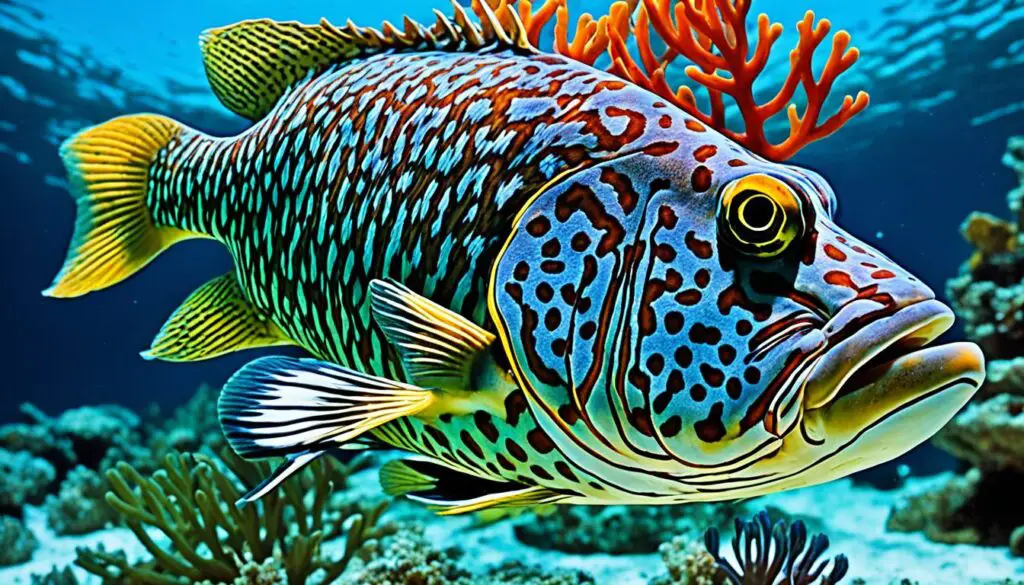
| Type of Signal | Description | Purpose |
|---|---|---|
| Visual Signals | Body movements, color variations, and postures. | Territorial displays, mating readiness. |
| Acoustic Signals | Unique sounds produced during communication. | Attracting mates, warning, maintaining social hierarchies. |
| Spawning Signals | Synchronized visual and acoustic displays among groupers. | Facilitating successful mating and reproductive success. |
Groupers and Their Feeding Relationships
Groupers play a big role in the ocean. They eat a wide variety of foods, showing how adaptable they are. This makes their diet very diverse.
Diverse Diet and Prey Selection
Groupers eat many different foods. Their diet includes:
- Small fish
- Crustaceans
- Mollusks
- Other marine organisms
This diverse diet helps them grow and reproduce. It also keeps the ocean healthy by controlling the number of prey. Groupers change what they eat based on what’s around them, keeping the ocean balanced.
Interaction with Other Predators
Groupers don’t just eat alone. They also interact with sharks and big fish. These interactions affect how they find and eat food. It can also change how many of certain fish there are in the ocean.
Groupers getting to eat certain fish first can change their numbers and the ocean’s health. This shows how important they are to the ocean’s balance.
Effects of Environmental Changes on Grouper Interactions
Environmental changes have greatly affected grouper populations. They change how these fish behave and interact in the ocean. Threats like population declines and habitat loss need quick action and smart management.
Total Population Declines and Management Efforts
Grouper populations are falling due to overfishing and losing their homes. These issues mess with their breeding and social life. To fight these problems, many management steps have been taken, such as:
- Creating marine protected areas to protect their homes
- Encouraging fishing that doesn’t overdo it
- Tracking changes in population numbers
These actions are key to keeping grouper populations healthy and their roles in the ocean safe.
Impacts from Climate Change and Habitat Loss
Climate change adds more stress to grouper populations. Changes in temperature, ocean chemistry, and damaged habitats change their world. Losing important homes makes it harder for young groupers to survive, making the population decline worse.
Adapting to these changes is vital for grouper health. Research and flexible management plans help lessen the bad effects of climate change and habitat loss.
| Factor | Impact on Groupers |
|---|---|
| Overfishing | Population declines, disruption of social structures |
| Habitat Loss | Reduced breeding success, loss of nursery areas |
| Climate Change | Temperature changes, ocean acidification, altered habitats |
Grouper Spawning Aggregations and Their Ecological Significance
Grouper spawning events are key for their survival. They happen at set times and places, often with the moon’s cycles. These gatherings bring together many groupers for breeding. This is important for their population to thrive.
These events are more than just for breeding. They also draw in sharks and other predators that feed on the groupers. This helps control grouper numbers and supports the marine food web. The presence of predators affects grouper behavior and where they live, creating a complex web of interactions.
Keeping grouper spawning sites safe is crucial for their survival. These areas are vital for grouper health and their role in the ocean. By valuing grouper spawning events, we help protect these fish and the health of our oceans.
FAQ
How do groupers interact with other marine life?
Groupers interact with many marine species, like fish and crustaceans. They even interact with sharks. Their actions can be as simple as eating or as complex as living together, showing their big role in the ocean.
What is the importance of groupers in marine ecosystems?
Groupers are key players in the ocean. They eat smaller fish and invertebrates, keeping their numbers in check. This helps coral reefs stay healthy and makes the ocean more diverse.
How do groupers communicate with other species?
Groupers talk to each other using sight and sound. They share info about their territory, when they’re ready to mate, and who’s boss. During mating, they use special sounds and looks to find a mate.
What are the social structures of groupers?
Groupers live in complex groups with a clear pecking order. This order affects who gets to mate and spawn. When they gather to spawn, it changes how they interact with other sea creatures.
Why is site fidelity significant for groupers?
Groupers come back to the same spots for food and to spawn. This habit shapes which other species live there and how they interact. It’s key to understanding their role in their home habitats.
What feeding relationships do groupers have?
Groupers eat a wide variety of fish and crustaceans. They adjust their eating habits based on what’s available. This helps keep the ocean’s balance.
How do environmental changes affect grouper populations?
Changes like overfishing and damage to their homes have hurt grouper numbers. Losing places to breed and spawn makes it harder for them to survive and play their ecological roles.
What are grouper spawning aggregations, and why are they significant?
These are big gatherings of groupers for breeding, often linked to the moon’s phases. They’re important because they bring predators and shape grouper populations.

